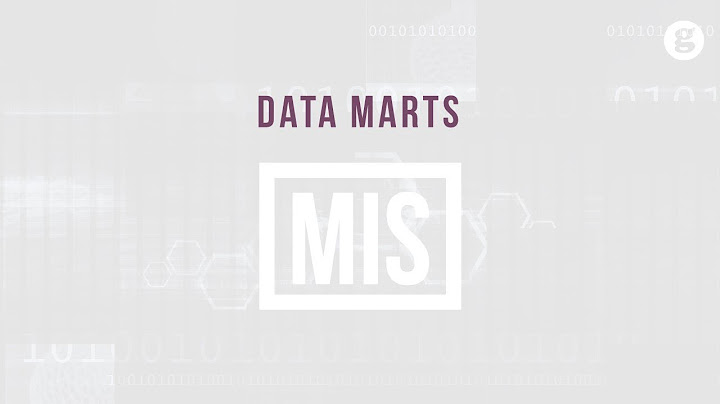Size class of the display as declared by the manufacturer. Often this is the rounded value of the actual size of the diagonal in inches. 27 in (inches)Diagonal Approximate diagonal size of the display. If the manufacturer does not provide such information, the diagonal is calculated from the width and height of the screen. 685.8 mm (millimeters) 68.58 cm (centimeters) 27 in (inches) 2.25 ft (feet)Width Approximate width of the display. If the manufacturer does not provide such information, the width is calculated from the diagonal and the aspect ratio. 597.888 mm (millimeters) 59.7888 cm (centimeters) 23.5389 in (inches) 1.9616 ft (feet)Height Approximate height of the display. If the manufacturer does not provide such information, the height is calculated from the diagonal and the aspect ratio. 336.312 mm (millimeters) 33.6312 cm (centimeters) 13.2406 in (inches) 1.1034 ft (feet)Panel type There are various panel technologies. Each has its own specific features - viewing angles, color reproduction, response time, brightness/contrast, production cost, etc. The image quality depends directly on the type of the display panel used. IPSPanel bit depth The most widely used panels are those with 6, 8, and 10 bits for each of the RGB components of the pixel. They provide 18-, 24-, and 30-bit color, respectively. 8 bits (6 bits + FRC)FRC Frame Rate Control (FRC) is a method, which allows the pixels to show more color tones. With quick cyclic switching between different color tones, an illusion for a new intermediate color tone is created. For example, by using FRC, a 6-bit display panel is able to show 16.7 millioin colors, which are typical for 8-bit display panels, and not the standard 262200 colors, instead. There are different FRC algorithms. YesColors The maximum number of colors, which the display is able to reproduce, depends on the type of the panel in use and color enhancing technologies like FRC. 16777216 colors 24 bitsAspect ratio The ratio between the horizontal and the vertical side of the display. Some of the standard and widely used aspect ratios are 4:3, 5:4, 16:9 and 16:10. 1.778:1 16:9Resolution Information about the number of pixels on the horizontal and vertical side of the screen. A higher resolution allows the display of a more detailed and of higher quality image. 1920 x 1080 pixels Full HD / 1080pPixel pitch The pixel pitch shows the distance from the centers of two neighboring pixels. In displays, which have a native resolution (the TFT ones, for example), the pixel pitch depends on the resolution and the size of the screen. 0.311 mm (millimeters) 0.0311 cm (centimeters) 0.0123 in (inches) 0.001 ft (feet)Pixel density Information of the number of pixels in a unit of length. With the decrease of the display size and the increase of its resolution, the pixel density increases. 81 ppi (pixels per inch) 32 ppcm (pixels per centimeter)Display area The percentage of the approximate area, taken by the active part of the screen, to the total front area. 89.66 % (percent)Backlight The backlight is the source of light of the LCD display panels. The type of backlight determines the image quality and the color space of the display. There are various backlights such as CCFL, LED, WLED, RGB-LED, and etc. W-LEDNTSC (1953) The NTSC (1953) color space is introduced in 1953 by the FCC with the appearance of color television and has a wider gamut than the sRGB. 72 % (percent)Brightness Information about the brightness of the screen. It is measured in candela per square metre (cd/m²). 250 cd/m² (candela per square meter)Static contrast The static contrast shows the ratio between the brightest and the darkest color, which the display can reproduce simultaneously, for example, within one and the same frame/scene. 1000 : 1Dynamic contrast The dynamic contrast shows the ratio between the brightest and the darkest color, which the display can reproduce over time, for example, in the course of playing a video. 3000000 : 1Horizontal viewing angle Information about the maximum horizontal viewing angle, within which the image on the screen is of acceptable quality. 178 ° (degrees)Vertical viewing angle Information about the maximum vertical viewing angle, within which the image on the screen is of acceptable quality. 178 ° (degrees)Minimum response time Information about the minimum amount of time, in which the pixels change from one color to another. Very often the manufacturer provides the response time for transition from grey-to-grey (G2G). 4 ms (milliseconds) 0.0040 s (seconds)Average response time Information about the average amount of time, in which the pixels change from one color to another. 6 ms (milliseconds) 0.0060 s (seconds)Maximum response time Information about the maximum amount of time, in which the pixels change from one color to another. 14 ms (milliseconds) 0.0140 s (seconds)Coating Information about the type of coating of the display. There are different types of matte and glossy coatings, each of which has its own advantages and drawbacks. Anti-glare/Matte3D Information on whether 3D is supported or not. NoHorizontal frequency (digital) The horizontal scan rate/frequency shows the number of horizontal lines, displayed by the monitor per second, when it is plugged to a digital source. 54 kHz - 90 kHz (kilohertz)Vertical frequency (digital) The vertical frequency/refresh rate shows how many times in a second the image on the screen is refreshed. 49 Hz - 76 Hz (hertz)110V Permissible voltage tolerance in a 110-volt electric system. 100 V - 120 V (volts)220V Permissible voltage tolerance in a 220-volt electric system. 220 V - 240 V (volts)Alternating current frequency Requirement regarding the alternating current frequency in the electric system. 50 Hz - 60 Hz (hertz)Electric current (A) Requirement regarding the electric current rating in amperes (A) of the electric system. 1.5 A (amperes)Power consumption (off) Power consumption in off-mode. 0.3 W (watts)Power consumption (sleep) Power consumption in sleep/stand by/suspend mode. 0.3 W (watts)Power consumption (average) Average power consumption in standard work mode. 24 W (watts)Power consumption (maximum) The maximum possible power consumption. 28 W (watts)Width Width without stand in different measurement units. 611.9 mm (millimeters) 61.19 cm (centimeters) 24.0906 in (inches) 2.0075 ft (feet)Height Height without stand in different measurement units. 366.5 mm (millimeters) 36.65 cm (centimeters) 14.4291 in (inches) 1.2024 ft (feet)Depth Depth without stand in different measurement units. 46.2 mm (millimeters) 4.62 cm (centimeters) 1.8189 in (inches) 0.1516 ft (feet)Weight Weight without stand in different measurement units. 4.74 kg (kilograms) 10.45 lbs (pounds)Width with stand Width with stand in different measurement units. 611.9 mm (millimeters) 61.19 cm (centimeters) 24.0906 in (inches) 2.0075 ft (feet)Height with stand Height with stand in different measurement units. 443.5 mm (millimeters) 44.35 cm (centimeters) 17.4606 in (inches) 1.4551 ft (feet)Depth with stand Depth with stand in different measurement units. 210 mm (millimeters) 21 cm (centimeters) 8.2677 in (inches) 0.689 ft (feet)Weight with stand Weight with stand in different measurement units. 5.17 kg (kilograms) 11.4 lbs (pounds)Box width Width of the package in different measurement units. 715 mm (millimeters) 71.5 cm (centimeters) 28.1496 in (inches) 2.3458 ft (feet)Box height Height of the package in different measurement units. 455 mm (millimeters) 45.5 cm (centimeters) 17.9134 in (inches) 1.4928 ft (feet)Box depth Depth of the package in different measurement units. 132 mm (millimeters) 13.2 cm (centimeters) 5.1969 in (inches) 0.4331 ft (feet)Box weight Weight of the product with all accessories and packaging in different measurement units. 6.84 kg (kilograms) 15.08 lbs (pounds)Colors Information about the colors, in which the specific model is offered to the market. BlackVESA mount Information about whether there is a possibility for wall mounting according to the VESA Mounting Interface Standard (MIS). YesVESA interface There are many various interfaces under the VESA standard, which differ in the size of the brackets, the distances between the screw holes and their number. 100 x 100 mmRemovable stand Information about whether the stand can be dismounted. Usually, this is required for wall mounting. YesHeight adjustment Information about whether the stand allows height adjustment. NoLandscape/portrait pivot Some displays have the ability to operate in landscape and portrait mode alike. NoLeft/right swivel Information whether the display can be swiveled around the stand axis. NoForward/backward tilt Most displays have the ability to be tilted forward and backward as to provide a more comfortable viewing position for the user. YesForward tilt Maximum degree of forward tilting of the display. 5 ° (degrees)Backward tilt Maximum degree of backward tilting of the display. 22 ° (degrees)Camera Information whether the current model has a built-in camera or not. NoConnectivity Information about the available connectivity ports, slots and interfaces such as USB, infrared port, SD card slot, audio/video and network interfaces, etc. 1 x HDMI 1.4 1 x D-sub 1 x 3.5 mm Audio OutHigh-bandwidth Digital Content Protection (HDCP)Features Information about additional software features, technologies, functions and services of the model. AMD FreeSync technology Blue Light Filter DDC/CI Flicker-free technologyCertificates, standards and licenses List of the standards, certificates and licenses supported/received by the current model. BSMI C-Tick CCC CE CECP ENERGY STAR 7.0 FCC Class B KC RoHS TCO Certified Display 7.0 TCO Edge 2.0 TÜV/GS VCCI WHQL (Windows 10; Windows 8.1; Windows 8; Windows 7)Operating temperature The operating temperature shows the safe temperature range (from minimum to maximum), within which the display will function flawlessly. Outside this range it might operate improperly and/or fail entirely. 0 °C - 45 °C (degrees Celsius) 32 °F - 113 °F (degrees Fahrenheit)Operating humidity The operating humidity shows the acceptable level of humidity, in which the display will function flawlessly. It sets a lower and an upper humidity level for safe operation and is measured in percentage. 10 % - 80 % (percent)Operating altitude The operating altitude shows the maximum admissible altitude, at which the display will function flawlessly. Above this level it might not operate properly and/or might seize to function. 5000 m (meters) 16404.2 ft (feet)Storage temperature The storage temperature shows the range from a minimum to a maximum temperature, within which storing of the display is considered to be safe. -20 °C - 60 °C (degrees Celsius) -4 °F - 140 °F (degrees Fahrenheit)Storage humidity The storage humidity shows the lower and upper humidity limit, which ensures safe storage of the display. Storing it outside these limits might damage the display. 5 % - 95 % (percent)Storage altitude The storage altitude shows the maximum possible altitude for secure storing of the display. Storing it above this limit may result in damaging the display. 12192 m (meters) 40000 ft (feet)Accessories Information about some of the main accessories included in the standard packaging of the current model. |





















